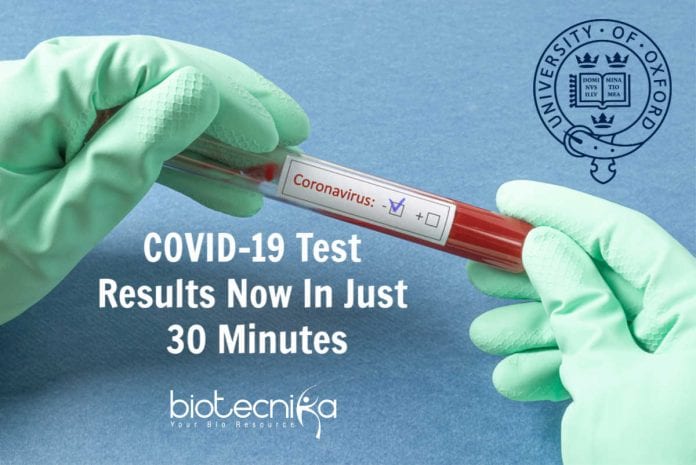Oxford Scientists Coronavirus Test
A new coronavirus test developed by the scientists at the University of Oxford can produce results in just about 30 minutes. It requires only relatively simple technical instrumentation and can produce the results within half an hour, which when compared to the current fastest testing methods, is three times faster. The scientists behind the test’s development say that the earlier stages of the infection which are not detected by current methods could be detected by this new test, which makes it more accessible to a broader range of healthcare professionals and facilities.
At the Shenzhen Luohou People’s Hospital in China, the new Oxford-developed test has already been validated using real clinical samples of the virus and it has demonstrated a 100% success rate though they have been used only on 16 samples so far, evenly split between those positive for the virus and those who tested negative. This result is very reassuring.
Some of the existing limiting factors that apply to the existing early test methods can be avoided by this new test and this will be the biggest impact of this test. Currently, the COVID-19 RNA (the instructions for coding DNA) must be isolated first
and then a process through which this RNA is tuned into DNA must be performed, following which, trained technicians will use a specialized polymerase chain reaction machine to test the DNA in a microbiology laboratory.On the other hand, for both conducting the test and for interpreting the results, the Oxford test requires only relatively simple equipment. This ability unlocks the possibility of using it in local facilities that lack specialized equipment and personnel or in hard to reach areas. Using an integrated hardware design that would allow the test to be used at clinics, airports or even for home use, the team that developed the test is working on the possibility of making it more flexible.
There are still a number of steps and a lot of work required before the test can get approved for broad use as this is still an early technology that’s just coming out of a lab. A key element of any effort to counter the spreading of coronavirus is testing, and the ability to test accurately in large numbers across a population. Countries could be far behind in terms of their testing efforts given the time it takes to collect samples and run the tests.
A large number of potentially asymptomatic carries who feel just fone are going untested as the testing is focused only on the most obvious and most severe cases. Any efforts taken to accurately track the transmission of COVID-19 and the measures such as shelter-in-place tactics, social distancing, and isolation has a huge impact depending on the testing.






























